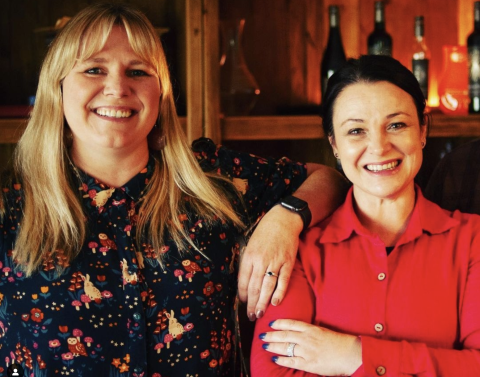From AU$26.24, $21.99, £19.41, 229.90 Norwegian kroner, 3,800 Japanese yen, €24.90, SG$45
Find Heirloom Pinot Noir
Find Heirloom Velvet Fog Pinot Noir (in the US)
I defy anyone to find better-value Pinot Noir than these two made by Heirloom in the Adelaide Hills. A recent encounter with the 2022 vintage of the white-label bottling (the picture above comes from their Instagram) reminded me how they deliver the full potential of this most capricious grape. It is pinpoint Pinot, with all the high-fidelity red fruits you could wish for, plus instant complexity and supreme persistence that are normally associated with bottles many times more expensive.
There is perhaps one proviso: you need to like the whole-bunch style of winemaking, and the signature flavours that creates. For avoidance of doubt: yes, I very much do. For me, this is key to the instant complexity of such Pinot Noirs. The 2022 that I tasted has a tomato-stalk sappiness which opens the wine, giving greater brightness and clarity to the flavours. It must always be balanced, of course, and there is no shortage of crunchy red-fruit flavour from the skin and pulp to keep the stemminess in check.
I asked Heirloom founder Elena Brooks (pictured above-right, next to winemaker Alexandra Haselich, again taken from Instagram) about the usage of whole-bunch in their vinification. 'I have always thought that Adelaide Hills [Pinot Noir] must have whole bunch, otherwise the wine will look like a dry red [an Australian term for generic blended red wine]. Whole bunch complexes the fruit both on the nose and the palate and it adds to the complexity of tannins as well.'
The white-label bottling contains 50% whole-bunch fruit. I wondered whether they make any choices related to lignification (the woodiness of the stems), either at harvest or during fermentation? 'This is a difficult question, as the vineyards perform differently every year. I like working with a few different clones, and the final wine is a blend between them, chasing perfume and style. For example, 115 always gives us lots of cherries, great colour depth, so we can be confident when using whole bunch. 114 is lighter in colour and fruit, but has a tighter palate, and this one is a bit dangerous when using whole bunch. 777 is a great clone, but I do not have much of it.'
Each clone evidently ripens at a different rate, providing a whole bunch of different options. All the fruit comes from the Kersbrook region of the Adelaide Hills, which you can see at the northern end of the map taken from our online version of the World Atlas of Wine. Heirloom don't own the vineyard, but have been using the same fruit since the first vintage 13 years ago, and 'we are still learning about the best sites and clones'.
Aside from the whole-bunch element, it sounds like a straightforward fermentation, with gentle maceration in open fermenters (to avoid bitterness), basket-pressing (see the press entry in your online Oxford Companion) and seven months of maturation in used French oak. The Velvet Fog cuvée is slightly different, however, with 'darker fruits, a little more oak and only 30% whole bunch'. That wine is primarily available in the US, presumably optimised for slightly different consumer preferences.
Both are the same bargain price, however. I asked Brooks about that too. She said that they first made the wine because they couldn't afford to keep drinking burgundy, which might sound light-hearted but is all too believable, sadly. There is 'huge pressure [on pricing], and in the last few years more so; between increased demand for Pinot Noir and a few small vintages. We are looking at increasing the price just a little.'
In case you still needed a call to action, there it is: one of the world's best-value Pinot Noirs won't be getting any cheaper. See my score and full tasting note on the 2022 vintage.
Want to know more about whole-bunch fermentation? This Oxford Companion to Wine entry tells you everything you need to know.















